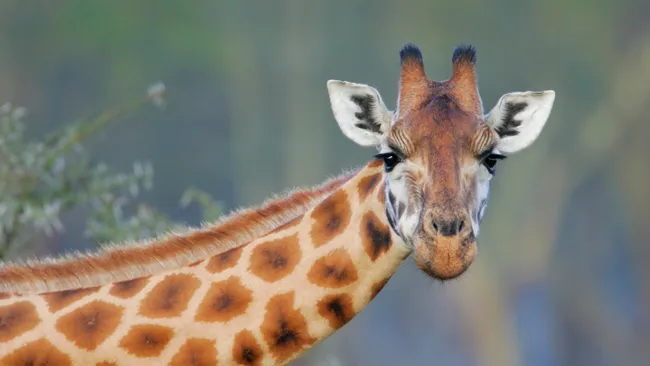Giraffes’ distinctive spots are more than just for show. So why do these tall animals have them?
Why Do Giraffes Have Spots? Science Explains These Iconic Patterns
Giraffes are world-famous for their long necks, but their beautifully patterned coats are just as iconic — and they serve multiple vital purposes beyond appearance.
Camouflage in the Wild
One primary function of a giraffe’s spots is camouflage. Their irregular markings break up the outline of their bodies, helping them blend seamlessly into the dappled light of trees and shrubs on the African savanna. Despite their enormous size, giraffes can be surprisingly difficult to spot — even just feet away.
“Depending on the vegetation where they live, they will have appropriate markings,” Daniel Mitchell, a researcher interviewed by Live Science, said in an email. In some cases, the patch shapes resemble the branching patterns of local acacia trees, adding to their stealth in their natural habitat.
This camouflage is especially crucial for young calves, who are more vulnerable to predators. A 2018 study found that giraffe calves with larger and rounder spot patterns had higher survival rates, likely due to improved concealment. Interestingly, the study also showed that calves often inherit their spot patterns from their mothers — evidence that certain traits are genetically passed down.
Thermoregulation: Staying Cool (or Warm)
Giraffes live in some of the hottest climates on Earth but can’t cool off the way many animals do — they don’t sweat or pant. Instead, their spots help regulate body temperature.
Beneath each spot lies a dense network of blood vessels. When giraffes need to cool down, the vessels beneath the spots dilate, pushing warm blood closer to the skin’s surface where it can dissipate heat.
“Thermal photographs of giraffes in hot conditions confirm this idea,” Mitchell said, noting that these images show dark patches emitting more heat than surrounding areas.
A new study (currently under peer review) focusing on Masai giraffes (Giraffa camelopardalis tippelskirchi) found that spot size may also influence heat retention. In colder climates, larger spots with their underlying vessels help conserve body heat, while smaller spots in hotter areas promote better heat dissipation. The researchers also discovered that spot patterns may impact survival during extreme temperatures — particularly in males, who roam larger territories and face greater environmental variation.
Kin Recognition and Social Bonds
Giraffe spots also play a role in social interaction. A 2022 study examined 399 adult female Masai giraffes and found that individuals with similar coat patterns formed stronger social bonds. Since these patterns are hereditary, the researchers concluded that giraffes may use coat patterns as visual cues for identifying kin.
Signals of Health and Status
Finally, as in many mammals, coat patterns may signal a giraffe’s overall health or social standing. A 2017 study suggested such patterns might even influence mate choice — although this hypothesis hasn’t yet been studied in giraffes directly.
